JANUARY/FEBRUARY 2021
The 100-Year Storm

People often think of life as a linear path, and sometimes it is. We set goals, work hard, and find people to help us along the way. However, there are some things in life for which none of us can plan. When I asked for advice on how to invest my time this year, a friend and mentor of mine offered little guidance. Rather, he referred to the COVID-19 pandemic as a “life-altering event” and “100-year storm” and encouraged long-range planning. In the past year, I did not learn nearly as much about glaucoma surgery as I anticipated. Instead, I gained new perspectives that I expect to maintain for the rest of my career.—“Adapting in the Face of Change: Twelve Lessons From an Unexpected Year,” by Rikki Enzor, MD, PhD | Read more
A Lasting Change
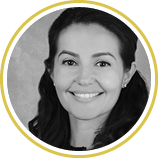
I identified and eliminated all of the “dead” time in my day to make my workflow more efficient. In doing so, I found that I was able to see the same number of patients and gain opportunities to be with my kids. As they grow older, I want my children to strongly remember my presence in their early lives, and by modifying my workday, I found a way to be able to pick them up from school and spend more time with them. This was a positive change that I implemented at the onset of the pandemic and plan to continue well beyond it. —“Staying Power,” by Sahar Bedrood, MD, PhD | Read more
MARCH/APRIL 2021
New World, New Tools
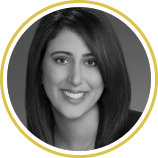

To move forward in this new world, we will need to adopt new tools. Studies over the past year have focused on identifying such tools. Drive-through IOP checks, mobile eye screening and testing, home tonometry, offsite visual field testing, and phone applications such as smartphone fundoscopy are just a few examples of proposed new and innovative devices. These instruments and techniques can improve patient care by easing access, boosting patient engagement, and increasing the quantities of data points we have available to make management decisions. —“COVID-19: An Opportunity to Forge a New Road Ahead,” by Karine Shebaclo, MD, MSc, and Malka Davina Kirschenbaum, MD | Read more
The Urgency of Allyship
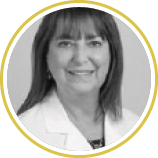
It has always been important to be an ally, but the events of 2020 have increased the urgency of allyship. The COVID-19 pandemic raised public awareness of the health care disparities that were previously known to many of us but became front-page news. Racial injustices were also more exposed, leading to increased activism to address social and societal justice. Increasing allyship in 2021 will help to address these crucial issues and help us heal our future by increasing equity. —“Allyship: The Time Is Now,” by Lynn K. Gordon, MD, PhD | Read more
MAY/JUNE 2021
Last Man Standing
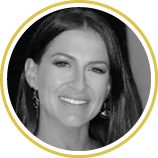
I distinctly remember having a conversation with my now fellowship director in February. He knew about my business and called to ask if my store was “going crazy.” I hadn’t noticed any change at that point, but he had the insight to understand that the pandemic would affect the availability of personal protective equipment and that my little business could be affected. Before COVID-19, I had just entered my fifth year of business, which had seen a steady growth of approximately 30% each year from the start. When the pandemic hit, I was suddenly getting the same number of orders I would typically receive in 1 to 2 months in a single day. This trend lasted for about 3.5 months and then slowly tapered down to a new baseline number of orders. The demand was unbelievable. I felt so badly for the frontline health care workers. Here I was, sent home from my rotation and making hats day and night. Other Etsy stores that had been established for as long as mine or longer were closing because they couldn’t keep up with the demand. I felt like the last man standing, and it was an unbelievable experience. My store’s production went up about 1,300% in 1 week. —“A Vital Side Hustle,” by Caroline Watson, MD | Read more
Disrupting Damaging Behavior

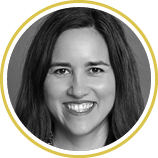
It can be tempting to ignore inappropriate behavior from patients, especially if it does not affect your ability to continue providing their care. However, recurrent gender-based inappropriate behavior, even from patients, has known negative impacts on staff, ranging from decreased work satisfaction to increased stress and mental illness. Disrupting the harasser’s behavior can prevent the victimization of others. It helps to have a response script rehearsed to avoid freezing in the moment. —“Responding to Sexual Harassment by Patients and Colleagues,” by Lauren E. Hock, MD, and Michelle T. Cabrera, MD | Read more
July/August 2021
Emerging Leaders
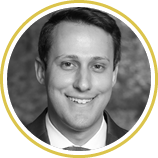
The argument for differentiating leadership and management is complex, but the intention and need for targeted leadership development is not. Leadership development programs are foundational in ophthalmology. Residents and fellows should be intentional about their personal development and pursue institutional, national, or societal leadership development programs that are designed to grow the next generation of leaders in ophthalmology. —“Business School Insights for New Ophthalmologists,” by Sean T. Berkowitz, MD, MBA | Read more
Continuing Education
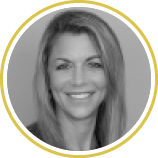
Discover your niche. Find something unique that you can bring to your practice setting that no one else does or that needs to be developed, and then become the best at it. Develop a business plan for your idea, meet with the administrators or partners who are involved in the decision-making, and, most of all, follow through. Once you have established this initiative, make a plan to bring another innovative idea, service, or technology to the practice in 6 months, in 1 year, or in another longer interval. Never stop learning and educating those around you to build and expand your position within your work environment and beyond. —“Outstanding Female Leader in Ophthalmology,” by Lisa K. Feulner, MD, PhD | Read more
September/October 2021
Mitigating Performance Plateaus

It has been said that surgeons are essentially high-performance athletes and that we should treat our bodies and minds as such. This concept was popularized by Atul Gawande, MD, MPH, a Harvard University professor and New York Times bestseller. In a 2011 article in The New Yorker, he argued that, like a professional tennis or golf player looking to improve their game, a surgeon can use a coach to mitigate performance plateaus. This can be achieved by having a skilled observer monitor our every move while we operate. In residency, we have attendings to coach us through difficult situations and to help us develop our surgical techniques. To truly improve, it is essential that we remain open to criticism and willing to address our weaknesses. We can even go a step further and seek out feedback by recording our surgeries and reviewing them with our attendings and senior residents. Again, just as athletes review their tapes, so should we. This practice can be tough on the ego but will ultimately make us better surgeons. —“Managing the Challenges of Residency Training,” by Kareem Sioufi, MD | Read more
The Art of Delivering Bad News

The first lesson in delivering bad news to a patient is don’t beat around the bush. Bad news doesn’t get better over time. Get right out there and say it. Leave no room for misinterpretation. After coming into the exam room, my surgeon got right down to business: “Crawford, I’ve looked at your chart, and frankly I have some concerns. I hate to be the bearer of bad news, but your eyes have some red flags. Unfortunately, you’re not a good candidate for LASIK.” With the bad news out in the open, we had an opportunity to address the concerns he saw—and, more importantly, why they disqualified me from a procedure like LASIK. My surgeon wanted to exercise caution in my case because any intervention would likely cause more visual problems in the longer term. “First, do no harm” indeed. —“From Bad LASIK Candidate to Brand Evangelist,” by Crawford Ifland | Read more


